The Berkshires Bowling Alley that Inspired "The Big Lebowski"
It’s been 36 years since the release of The Big Lebowski, the irreverent cult comedy by Joel and Ethan


Here at Untapped New York, we have a special relationship to “The Raven,” the famous poem by Edgar Allan Poe that was published 175 years on January 29, 1845. That’s because in 2012, our writer Benjamin Waldman, rediscovered the lost mantel in front of which Poe wrote the poem. Then, as a result of that discovery, we were contacted by the great grand-daughter of the man who had saved the mantel from destruction in 1888. We met her and were shown original notes by Edgar Allan Poe along with his signature inside the notebook. This year, on the 175th anniversary of the poem, we will trace the places in New York City that are connected to the poem.
Once upon a midnight dreary, while I pondered, weak and weary,
Over many a quaint and curious volume of forgotten lore—
While I nodded, nearly napping, suddenly there came a tapping,
As of some one gently rapping, rapping at my chamber door.
“Tis some visiter,” I muttered, “tapping at my chamber door—
Only this and nothing more.”
Boston, Philadelphia and New York City all have claim to Poe. Poe was born in Boston in 1809 and first arrived in New York City in 1837. He came with his wife Virginia and mother-in-law Maria, but only stayed for a few months. During that time Poe lived on Sixth Avenue and Waverly Place and 113 1/2 Carmine Street.
In 1844, after spending some time in Philadelphia, Poe returned to New York City with his wife. During this sojourn, they first stayed in a boarding house located at 130 Greenwich Street before moving to a farmhouse in the vicinity of West 84th Street and Broadway owned by the Brennan family.
While living in the Brennan Farmhouse, Poe composed “The Raven.” Two competing plaques commemorate the farmhouse. Both are located on 84th Street (with an honorary street name of Edgar Allan Poe Street) and Broadway, though one is east of Broadway and the other west.

While living at the Brennen Farmhouse, Poe wrote his most famous work, “The Raven.” “The Raven” was first published with Poe’s name in The Evening Mirror where Poe worked as a critic. The Evening Mirror Building, which was located downtown at 25 Ann Street, is currently a residential building and was rechristened the Edgar House. There is a plaque memorializing Poe in the building, however it is inaccessible to the general public (we viewed it on a visit to a well-known publisher, who lives in the building).
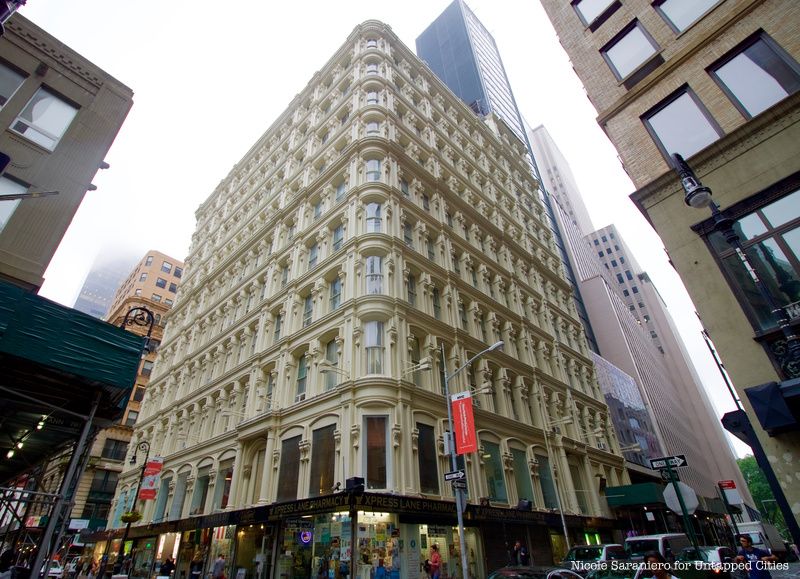
25 Ann Street, where Poe was working when The Raven was published
For “The Raven,” Poe was inspired by the farmhouse and Mount Tom, a rocky outcropping located just inside of Riverside Park off of 83rd Street, which Poe named after the Brennan’s young son. The room described in the poem is thought to have been based upon Poe’s chamber in the farmhouse where he wrote the poem.
The mantelpiece from that room, known as the Raven Mantel, was saved from the farmhouse’s destruction in 1888 by a Colonel Hemstreet who presented it to Columbia University, his alma-mater, in 1908 along with documents attesting to its authenticity. Columbia University was given the charge to ensure that the artifact was “appropriately placed and sedulously cared for,” but there had been very little documentation available since the donation, apart from a 1954 photograph in the Raymond Biswanger Slide Collection at the University of Pennsylvania. A tip came from a website that stated the mantel was in Philosophy Hall, but a quick trip there yielded nothing. A trip to Butler also came up empty, and Benjamin then began to check every possible building on the Columbia University campus.

The Raven Mantel in its previous, forgotten location
A staffer at the Library Information Office suggested that the Columbia archives department, located on the 6th floor of Butler, might have some ideas. According to Waldman,
The door was locked and no one answered to my rapping on this door. I stopped by the Rare Book and Manuscript Library, next door to see if they knew when the archivist would return. The librarian asked what I was looking for and I responded, the elusive Raven Mantelpiece. She smiled and said that it was in an office located right behind her desk. I was led there, in awe, that I had actually found this elusive grail. It was perched behind a railing on the mezzanine of the back room, forgotten.
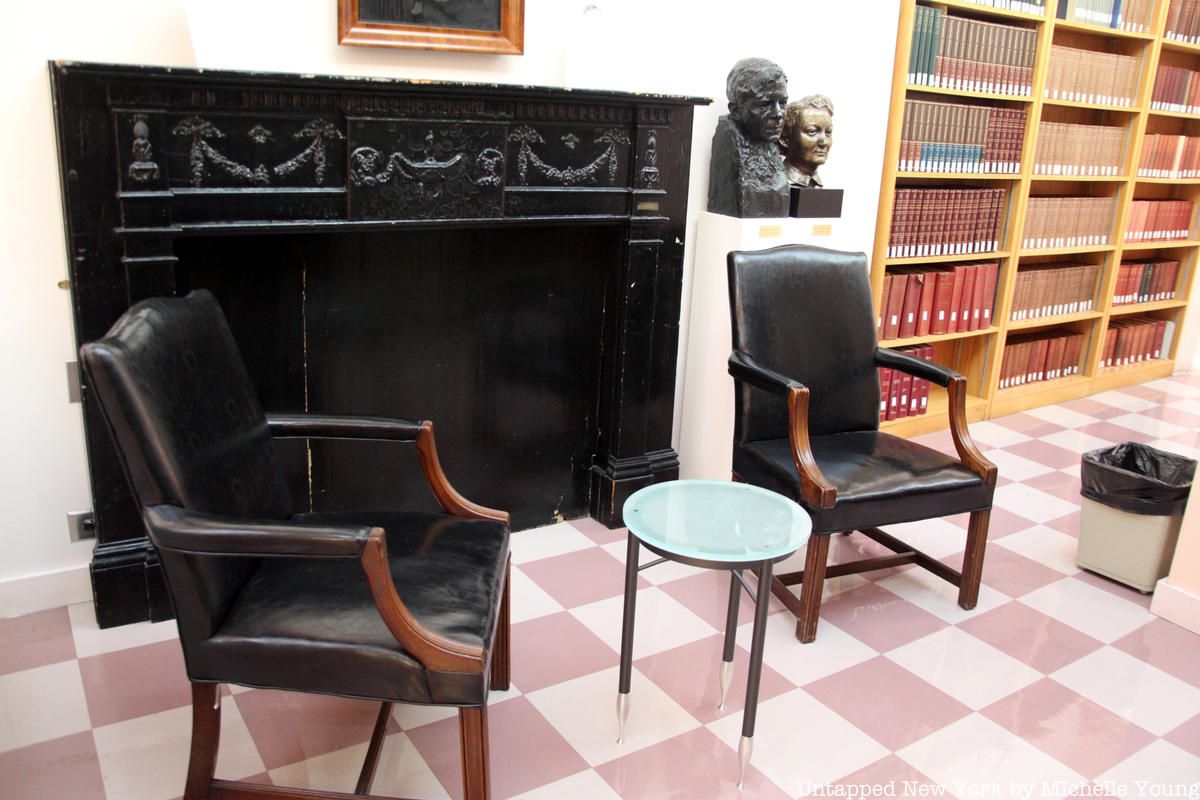
In May 2012, after Waldman (with the New York Times, which published an article about Waldman’s quest) began poking around the issue, the mantelpiece was moved to a more prominent location, still within the Rare Book and Manuscript Library in Butler Library. Asked why, Emily Donahue, a Columbia spokeswoman, told The New York Times “that ‘there really was no “reason” for it. ‘There is only so much space in the libraries and items shift regularly as exhibitions come up and down,” she said. Coincidence (as Columbia would like us to believe) or not, it is great that the University is once again honoring this great American poet.
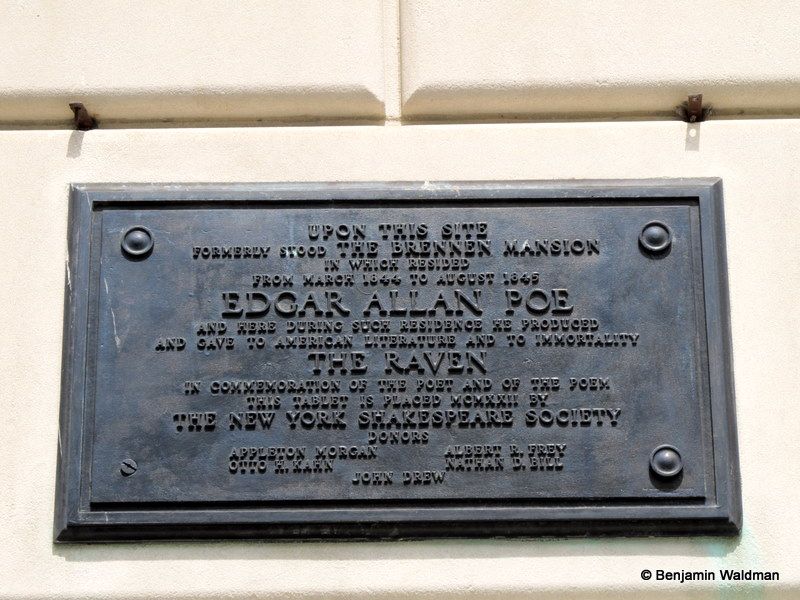
Plaque at 84th Street presented by the New York Shakespeare Society
Even though the Brennen Farmhouse was razed in 1888, Poe’s time there was not forgotten. In 1922, The New York Shakespeare Society erected a plaque on the site memorializing Poe’s time there and noting that he produced “The Raven” while residing at the farmhouse. The New York Shakespeare Society erected the plaque because they felt an affinity towards Poe. The Society was also involved in the saving of Poe Cottage on Fordham Road in the Bronx. In relation that work, they wrote that they felt moved to be involved “because [they were] a Shakespeare society, and because Edgar Allan Poe was our American Shakespeare.”
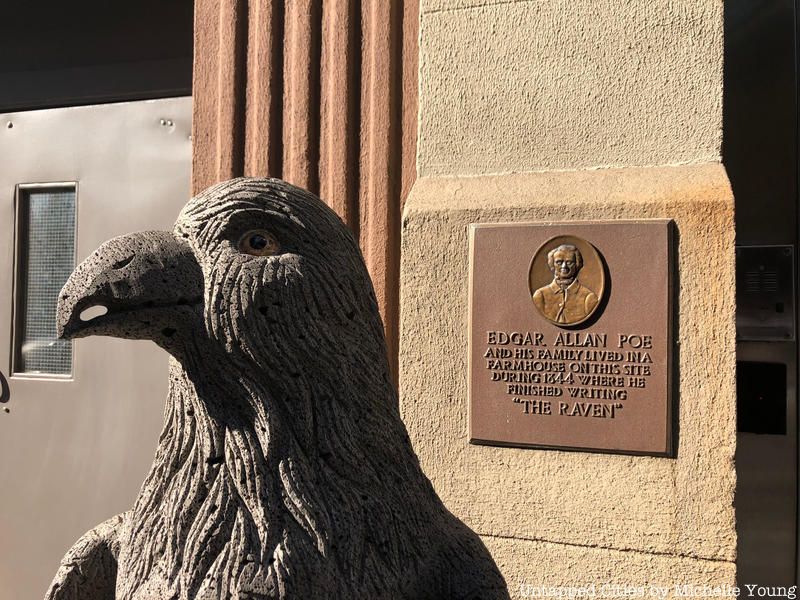
A second plaque east of Broadway on 84th Street
In September 2012, we met with Susie Hazel, the great grand daughter of Colonel Hemstreet, who had saved the mantel. She showed a journal of Hemstreet’s which included an autographed note by Edgar Allan Poe, which Hazel surmised may be Poe critiquing some of Hemstreet’s own poetry. As you can see in the notes below, he corrects some spelling and crosses out some lines.
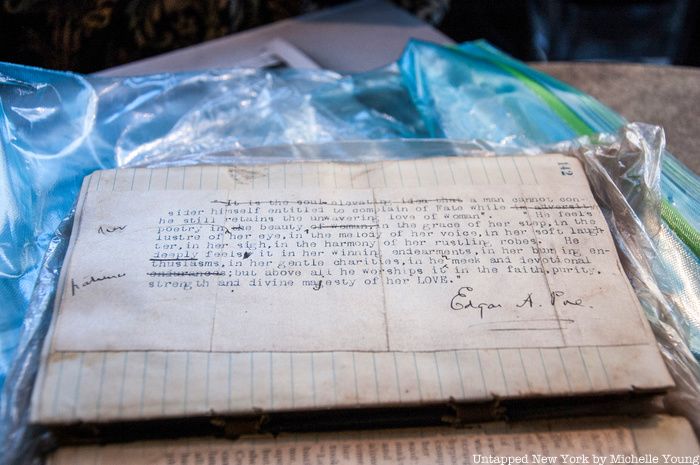
Colonel Hemstreet volunteered for the Union at the outbreak of the Civil War and fought in the battles of Shiloh and Corinth and marched with Sherman. When he returned from the war, he studied at Columbia College Law School and passed the bar in New York. He moved to New York and lived in what was the 24th Congressional District, which now is Crown Heights down to Flatbush. According to the Brooklyn Daily Eagle, Hemstreet “preferred however stenography, journalism, and general literary work the practice of law.” During his lifetime, had had published books on philosophy and “metaphysical subjects,” the Daily Eagle continued, in an article about Hemstreet’s attempt to run for U.S. Congress.
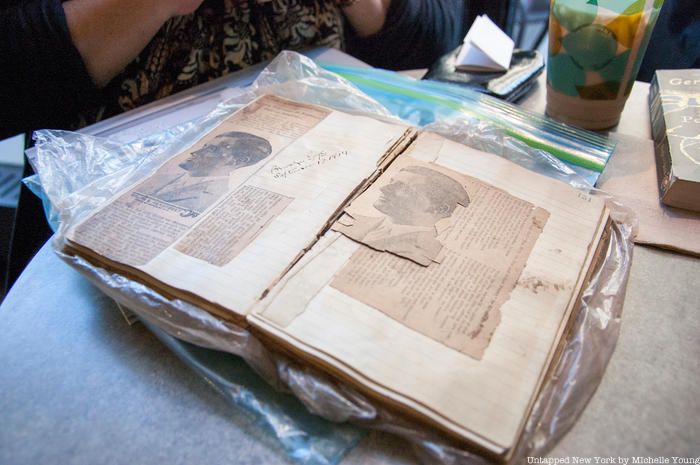
Newspaper clippings about Colonel Hemstreet’s son in the journal, Ralph E. Hemstreet upon his appointment as an Assistant District Attorney in Brooklyn when living at 1332 Bergen Street in Crown Heights.
Today, the area around 84th Street and Broadway is no longer the rocky landscape it was during the time Edgar Allan Poe lived there. All traces of wooden clapboard farmhouses are long gone, and the land leveled for the laying out of the street grid which had been already determined in 1811. Of course, further uptown, you will find outcroppings of Manhattan schist which were not cleared out. But the Upper West Side today remains uniformly urban.
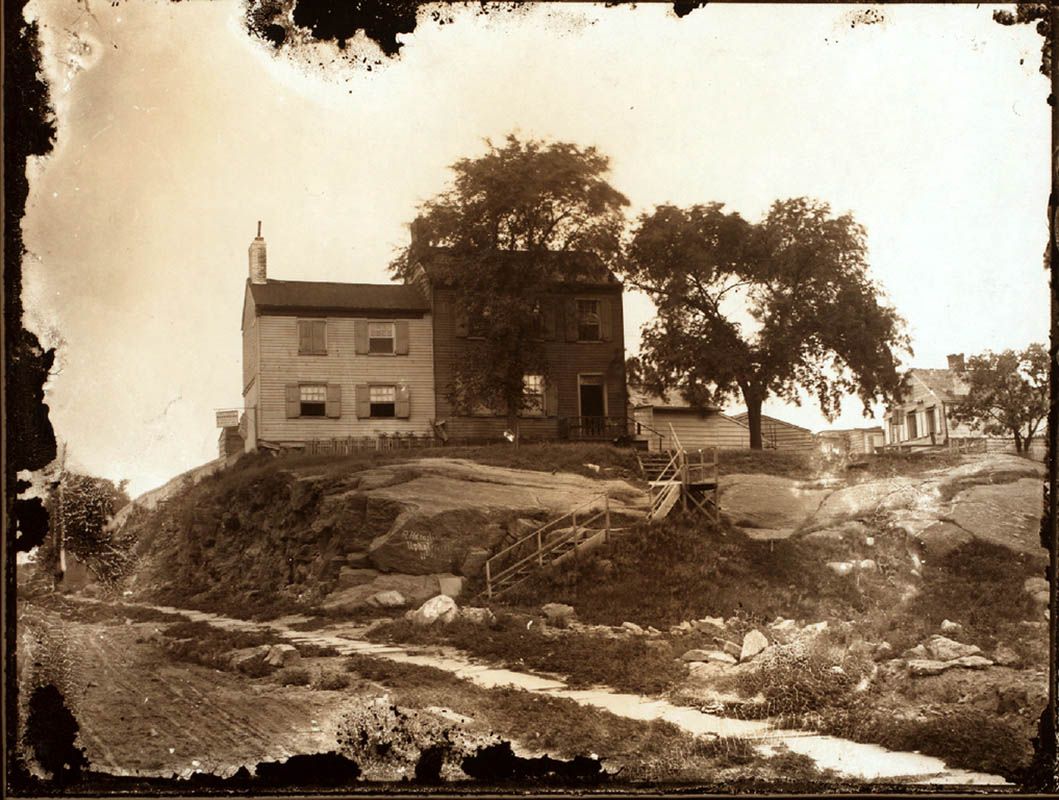
The Brennan Homestead on the Upper West Side. Photo from New York Public Library.
But looking at the photograph, you can almost hear the rapping, rapping at the chamber door that Poe wrote about on a dreary, windy night in the wooden farmhouse perched above the Hudson River.
Next, check out 10 places to discover Edgar Allan Poe in NYC.
This article written by both Benjamin Waldman and Michelle Young.
Subscribe to our newsletter